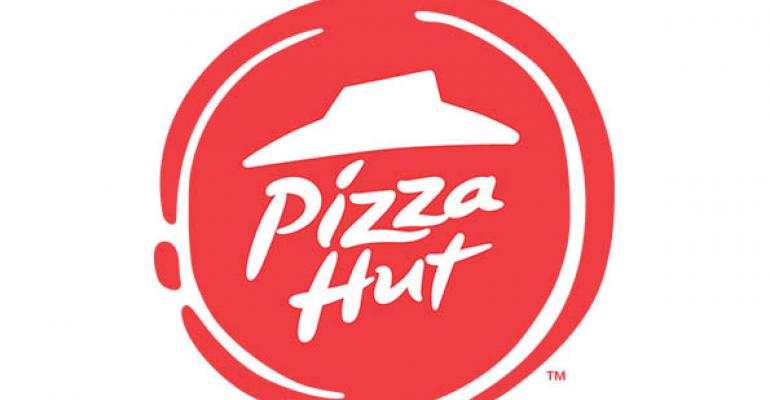Yum Brands Inc., having newly spun off its Yum China division, reported on Thursday a strong fourth quarter for its KFC and Taco Bell brands, which each indicated strong system sales growth and same-store sales increases of 3 percent.
The exception was Pizza Hut. In the fourth quarter ended Dec. 31, same-store sales fell 2 percent globally, including a 4-percent decline in its struggling U.S. market.
The numbers are particularly troublesome for Yum, which has spent much of the past two years working to improve sales at Pizza Hut. It also comes as its biggest competitors, notably Domino’s and Papa John’s, have flourished.
Yum CEO Greg Creed called the results “disappointing and not acceptable.”
Pizza Hut is important to Yum, especially after the spinoff of the largely company-run Yum China division as a franchisee of the company. Creed said the pizza chain in the U.S. represents 10 percent of Yum’s global operating profit.
One of Pizza Hut’s problems in the U.S. is the state of those locations, executives said. Its domestic legacy is that of a dine-in chain. But over the years, Pizza Hut has shifted toward a delivery-and-takeout model similar to Domino’s and Papa John’s.
Still, more than half of its U.S. locations have dining rooms that “are not ideally set up for delivery,” Yum CFO David Gibbs said on the earnings call. The company plans to get “into more delivery-friendly assets over time,” he said.
As such, executives suggested the turnaround won’t be simple.
“Unlike a lot of transformations, you can’t just introduce a new product,” Creed said. “This one takes a little time.
“It will not be complete in 2017.”
Pizza Hut must improve in several areas, Creed said, including digital, delivery time, point-of-sale simplification and what he called “asset optimization.”
Yum is refranchising company-owned units with a goal of getting to at least 98-percent franchisee owned by the end of 2018. Yum itself will operate fewer than 1,000 of its more than 43,000 global restaurants.
Yum refranchised 427 locations in 2016, 195 of which were Pizza Hut locations in the U.S., executives said on the call.
Any turnaround would require significant buy-in from the franchisee base, Creed added. He likened it to KFC’s domestic turnaround — the chain just reported its 10th straight quarterly same-store sales increase in the U.S.
KFC’s turnaround started with an aligned strategy between the brand and its operators, Creed said. Yum is looking to KFC as an example of how it could improve Pizza Hut’s U.S. business.
Creed noted that there is considerable potential in the U.S. for Pizza Hut’s growth.
“Let me be clear: We see market-share opportunity in this category,” he said. “We will execute better to capture our fair share and more.”
Earnings strength: Yum stocks rose slightly on Thursday, largely on profit growth that beat analysts’ expectations for the year. Net income increased 25 percent, to $1.6 billion, or $2.48 per share, from $1.3 billion, or $2.11 per share. Revenue for the year fell 1 percent, to $6.37 billion, from $6.44 billion.
For the quarter, net income fell 3 percent, to $267 million, from $275 million. But excluding special items, earnings per share increased 19 percent, to 79 cents, from 67 cents. Revenue for the quarter increased 2 percent, to $2.02 billion, from $1.98 billion.
At KFC, same-store sales increased 4 percent in the U.S., capping a year in which same-store sales increased 3 percent.
Delivery potential: Yum said delivery globally has big potential for its three brands.
At KFC, Creed said delivery is in 5,000 of the brand’s more than 20,000 locations.
“Delivery is the fastest-growing channel in the business,” he said.
“The great thing about KFC is that it’s perfectly set up to be delivered,” he added, calling a bucket of hot chicken a perfect delivery vehicle.
Taco Bell has started to roll out delivery, and 900 locations in the U.S. offer delivery. It’s “not a huge part of the business at the moment for Taco Bell,” Creed said, but in some college towns it can be 4 percent to 5 percent of the business.
That is the focus at Pizza Hut, too, as the brand looks for a turnaround and hopes to shift away from its perception as a dine-in restaurant in many markets.
“We have to turn Pizza Hut as a delivery brand,” Creed said. “We have to change the consumer’s perception.”
Correction: Feb. 9, 2017 A previous version of this article incorrectly identified the number of restaurants that Yum! Brands refranchised in 2016. It was 427.
Contact Jonathan Maze at [email protected]
Follow him on Twitter: @jonathanmaze





